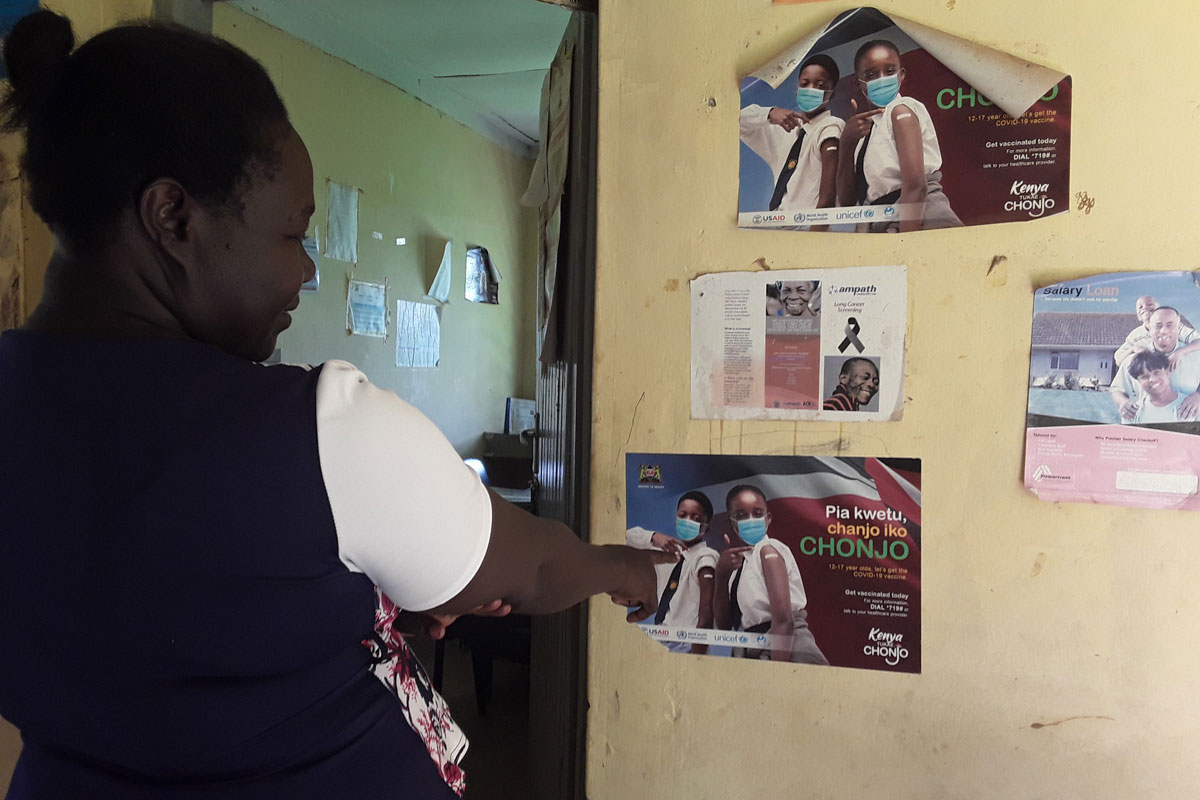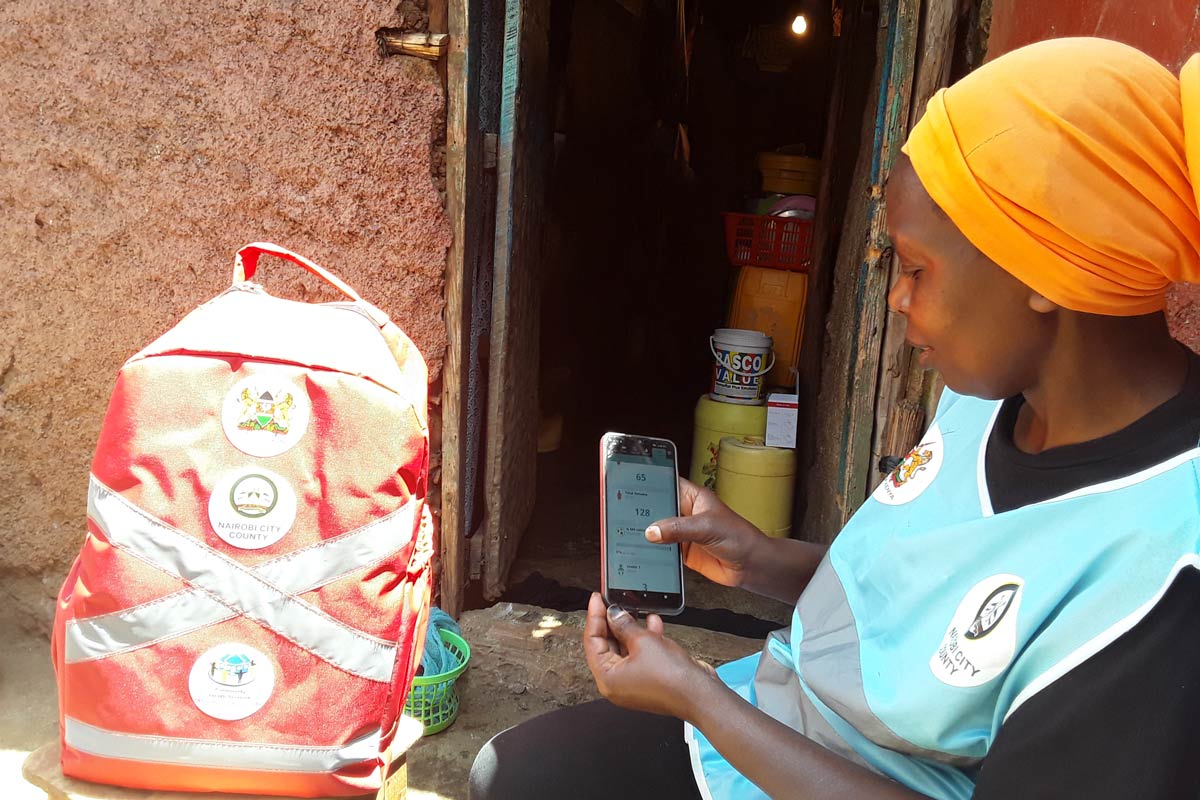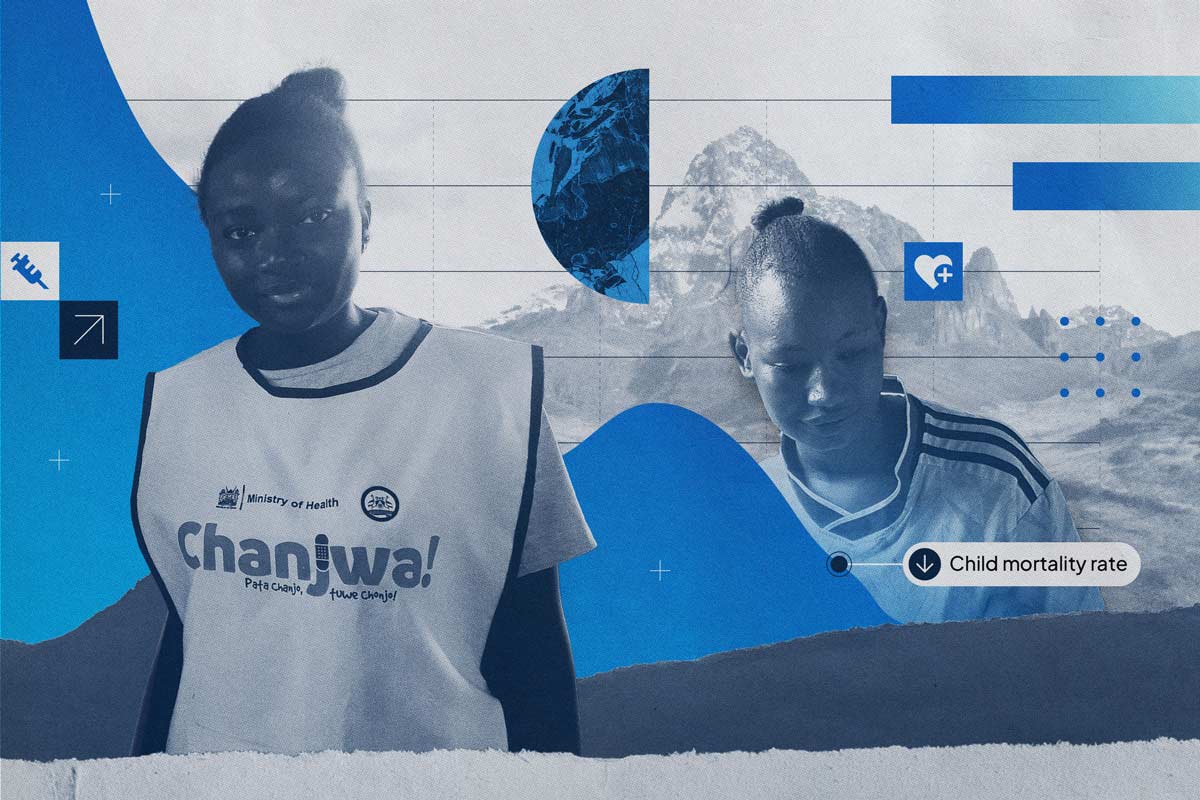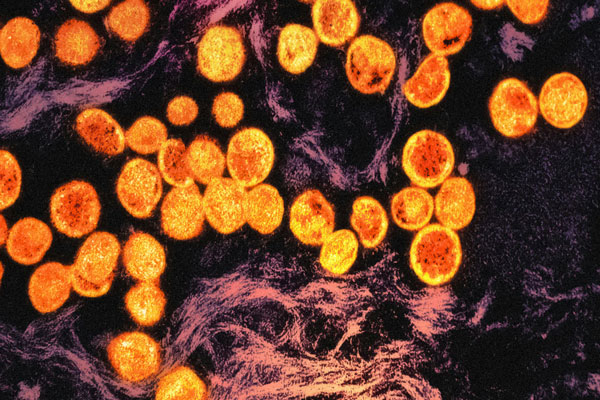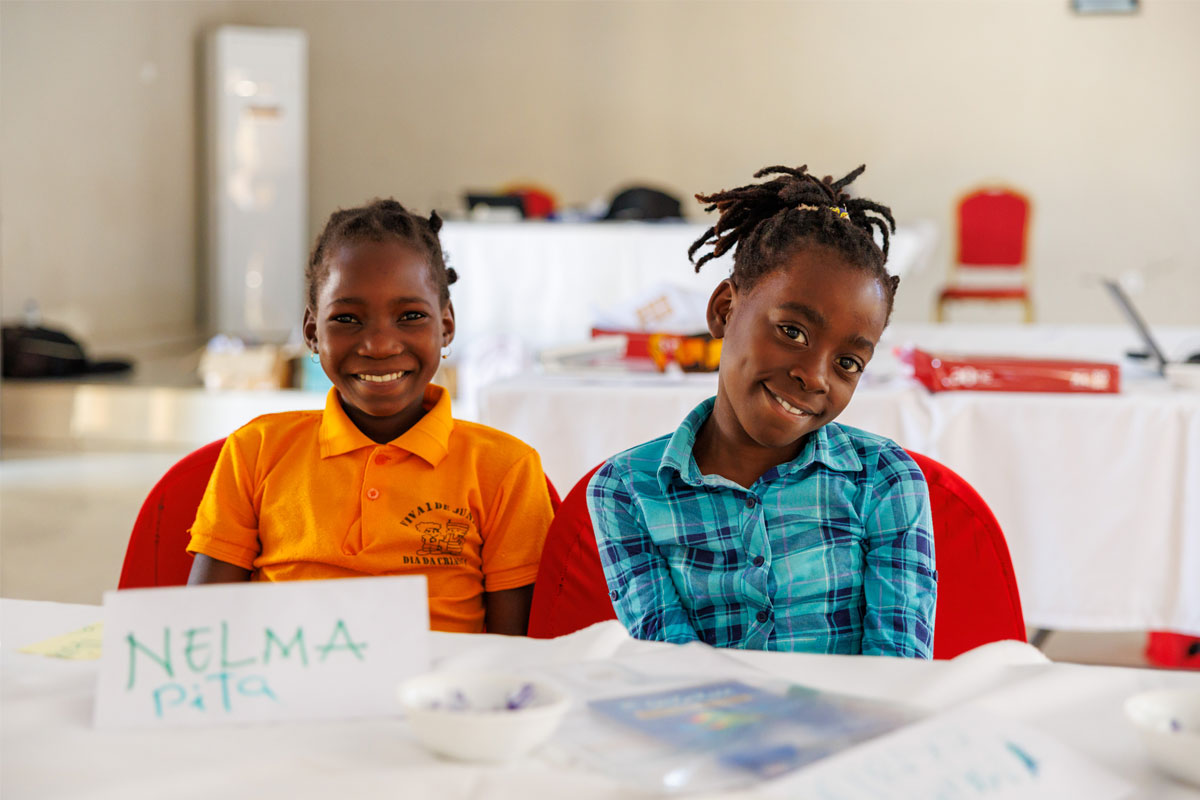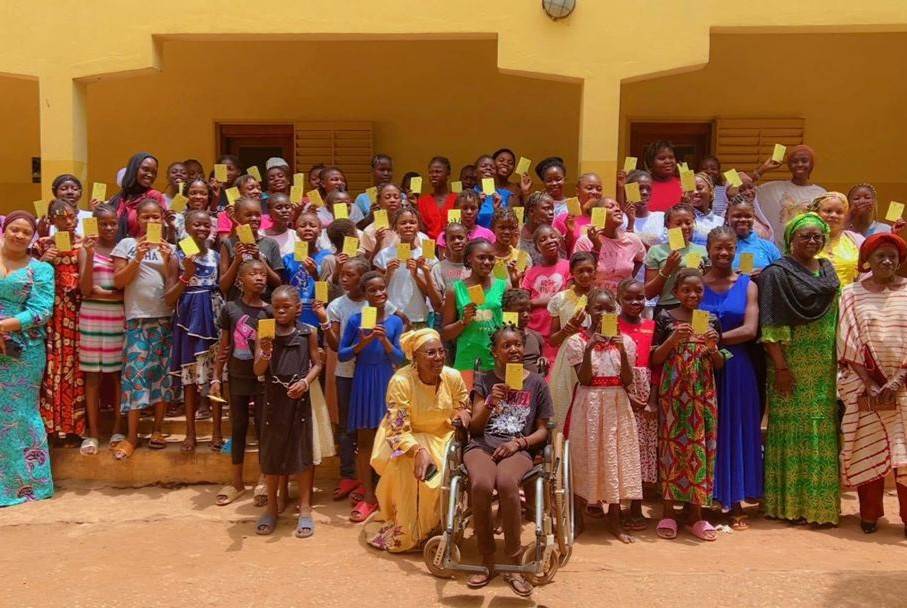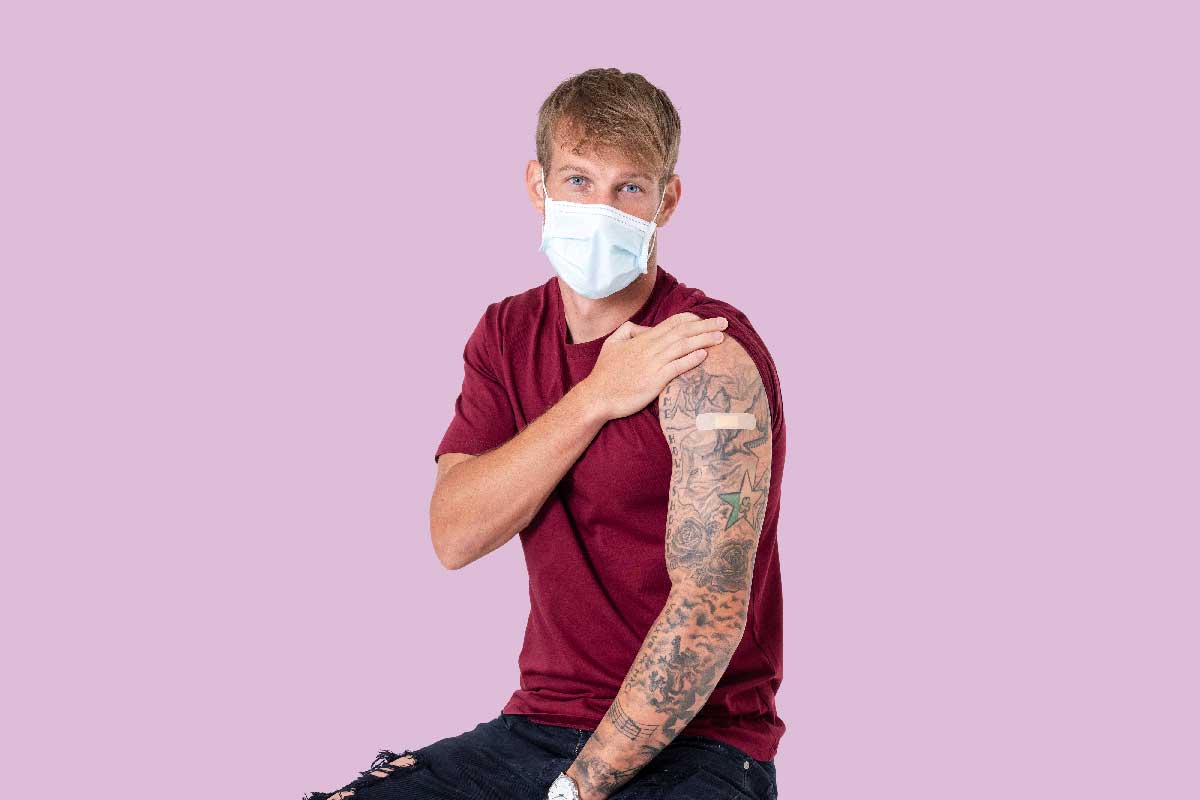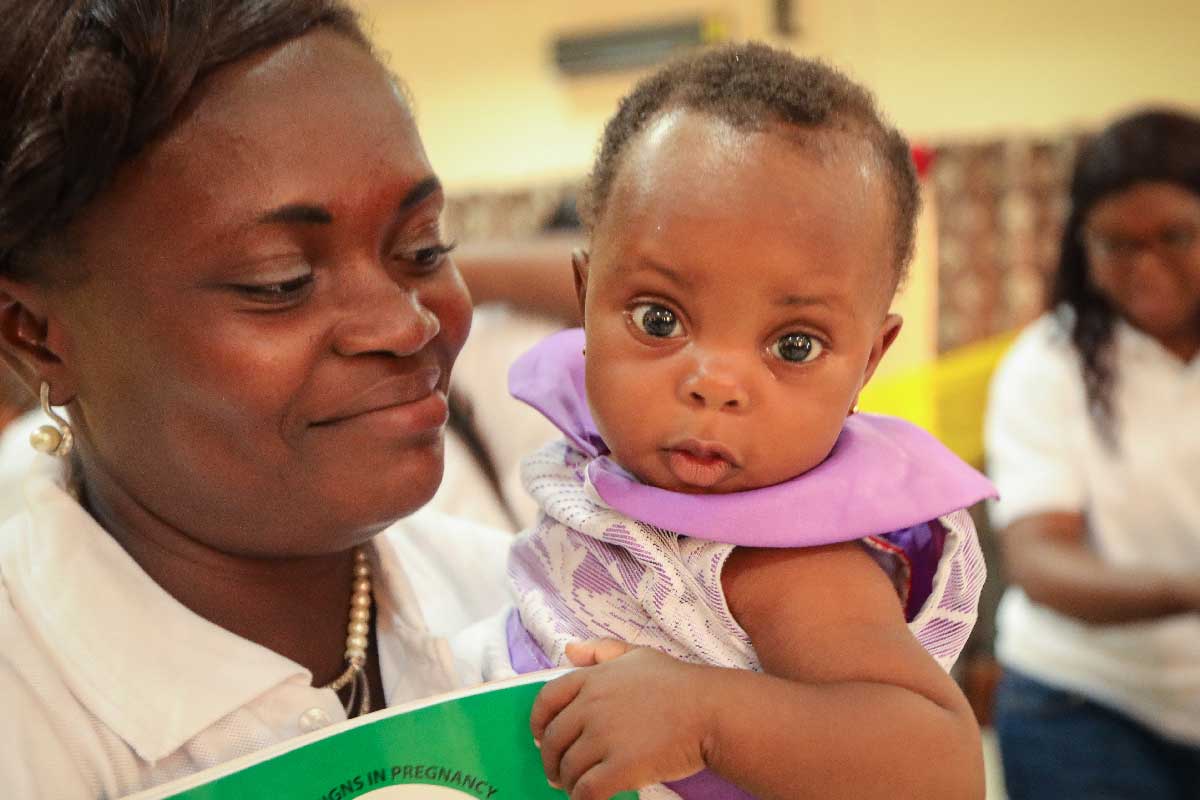High-tech tools, old-school vigilance: how Kenya is keeping polio at bay
Vaccination rid Kenya of wild-type poliovirus over a decade ago, but a lapse in immunisation rates or surveillance now could be incredibly costly, experts explain.
- 4 June 2025
- 11 min read
- by Joyce Chimbi

Joyce Nakhumicha was an all-round healthy baby, born in the planting season of 1977 in western Kenya. In the early 1980s, she fell suddenly ill.
“One morning I began to stumble and fall. My hands were shaky and could not hold my cup of porridge. My parents said it was malaria, but my aunt said it might be a mysterious, dangerous disease attacking small children. She said we should immediately go to Alupe Hospital in neighbouring Busia County,” she recounts.
That facility had been established in 1947 as a leprosy hospital and research centre – it has since been named Alupe Sub-County Referral Hospital – but by the 1980s, was increasingly welcoming children struck down by poliomyelitis onto its wards. As Nakhumicha’s aunt had suspected, Nakhumicha was one of them.
“Foreign doctors tried to fix my legs for nine months as they had completely folded at the knees. I made some progress while there, but eventually remained permanently paralysed from the knees down. I am also very small for a woman aged 48 years.”
Bungoma County, where Nakhumicha lived and went to school, was less than an hour from the Ugandan border, in a zone that had proven a high-risk area for the epidemic paralysing disease – and which remains relatively vulnerable today.
Like most Kenyan children in the early 1980s, Nakhumicha was unvaccinated against polio. While the polio vaccine was developed in the 1950s, it had only been available in Kenya on an ad hoc basis in the early decades of its existence. In fact, in 1980, when the Kenya Expanded Programme on Immunization (KEPI) was established, no child in Kenya had received the third dose of polio vaccine. Levels of protection changed quickly: By 1990, 84% of Kenyan children had been protected with three doses of the vaccine.
Uganda lagged behind its neighbour on polio immunity. The Uganda National Expanded Programme on Immunization (UNEPI) was launched in 1983. A 1986 survey revealed just 12.9% of children were vaccinated against polio. By 1990, Uganda too had made strides, protecting 74% of its children against the paralysing disease.
But for many, the opportunity to get protected simply came too late. Nakhumicha’s brother, Kennedy Wanjala, and their first cousin had both also contracted the disease. Wanjala was completely paralysed in the right leg and their now-departed cousin in the left leg. Today, Wanjala repairs shoes at the busy Bungoma town matatu (public vehicle) station.
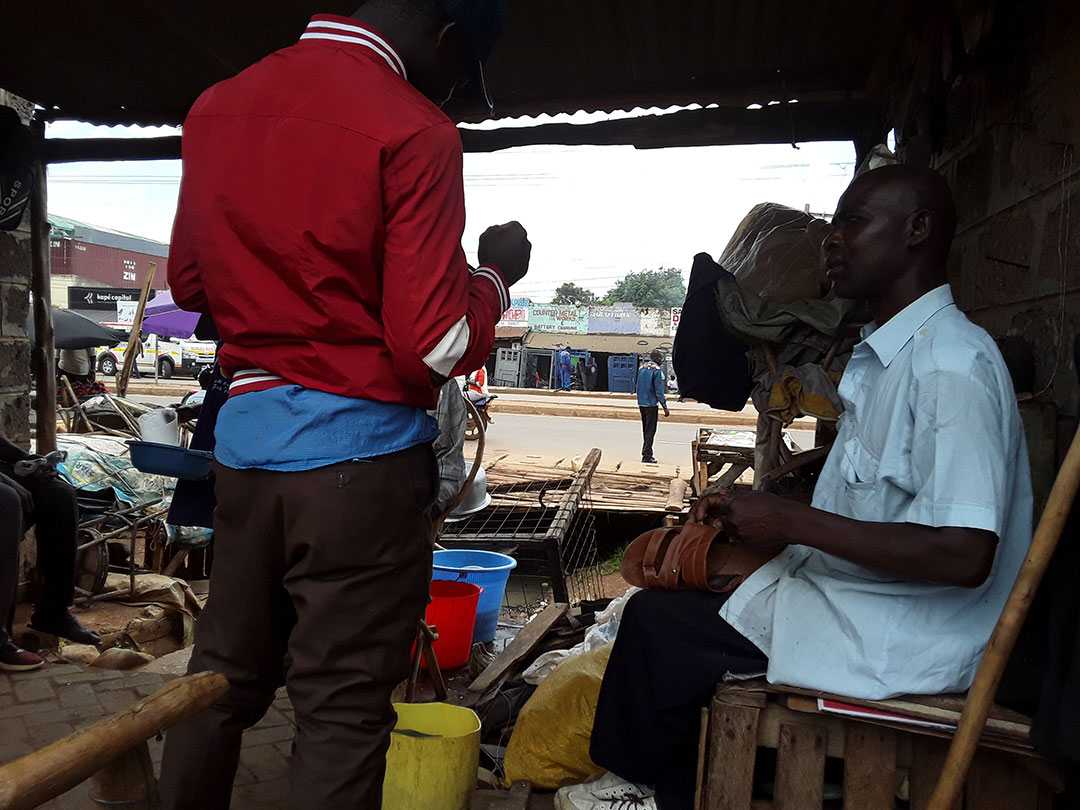
Credit: Joyce Chimbi
Nakhumicha, meanwhile, says that while she is grateful to be alive and a mother of three daughters, “I long stopped dreaming and have no great expectations. My days are all the same. I sell sugarcane at the entrance to my home. This is my life. Crawling to move, crawling to survive. Let it not be another child’s fate.”
Vaccine toolbox
It’s likely many, many more children contracted the virus during the outbreak that crippled Nakhumicha and Wanjala than anybody knew. Polio spreads fast, and is only symptomatic in one out of every 200 cases – but in those cases, the infection often leads to irreversible disability. Among the paralysed, 5–10% die when their breathing muscles become immobilised. Polio can also cause inflammation of the brain and spinal cord (meningitis), which can also be fatal.
But mass vaccination has halted the virus’s spread in almost every country in the world. Wild polio now remains endemic to just Afghanistan and Pakistan, but as a shock 2022 outbreak in Malawi proved, every country remains vulnerable while the virus circulates anywhere, calling for sustained, high immunisation rates worldwide.
There are several vaccines in use: the oral polio vaccine (OPV), according to the World Health Organization (WHO), has an efficacy estimated at 82% after one dose, 96% after two doses, and 98% after three or more doses. It has been instrumental in reducing global polio cases by over 99% since 1988.
Have you read?
Two doses of the inactivated poliovirus vaccine (IPV) used against all three types of polioviruses, wild poliovirus 1, 2 and 3, provide at least 90% protection, with three doses offering 99% protection. Nearly all children (99%) who get all the recommended doses of IPV will be protected from polio, which has resulted in the incidence of polio reducing by 99.9% globally.
Kenya and Uganda use both IPV and OPV to fight polio. Charles Muitherero, data manager for Vaccine Preventable Diseases at the WHO Country Office in Kenya says while Kenya and Uganda are both wild-polio free, both countries remain vigilant against the rare but recently increasingly common circulating variant poliovirus type 2, also called circulating vaccine-derived polio virus type 2 (cVDPV2).
Polio-free, but still not safe
Circulating variant poliovirus is a strain that has genetically changed from the weakened virus in the oral polio vaccine. It emerges when the vaccine virus, shed in the stool, circulates in communities with low population immunity – in other words, where vaccination rates are too low for group protection – giving the virus the opportunity to genetically change as it hops from person to person, and regain its ability to cause paralysis. Children along the border are particularly at risk, as they are often hard to reach with immunisation services.
“With all countries, the key is not only to achieve [elimination of the disease], but then to sustain it. Polio is a highly infectious disease, and time and again we have seen polio-free countries become re-infected through large-scale population movements. Kenya is no exception. It has been re-infected a number of times,” says Dr Kebba Touray, lead of the WHO Regional Office for Africa Geographic Information System (GIS) Centre. He explains that each time the country has found that the virus has returned, the public health system has managed again to eliminate it as a public health threat.
Touray says the solution is in globally eradicating the disease, and recommends strong disease surveillance for rapid detection and response, along with high vaccination coverage. Touray also notes that Kenya stands out in the rapid detection of re-introductions of polio disease, and in responding quickly to control outbreaks. The country also has a strong record of coordinating with its neighbours, including Uganda, and as recently as March 2025, Ethiopia and Somalia, in pursuit of shared safety.
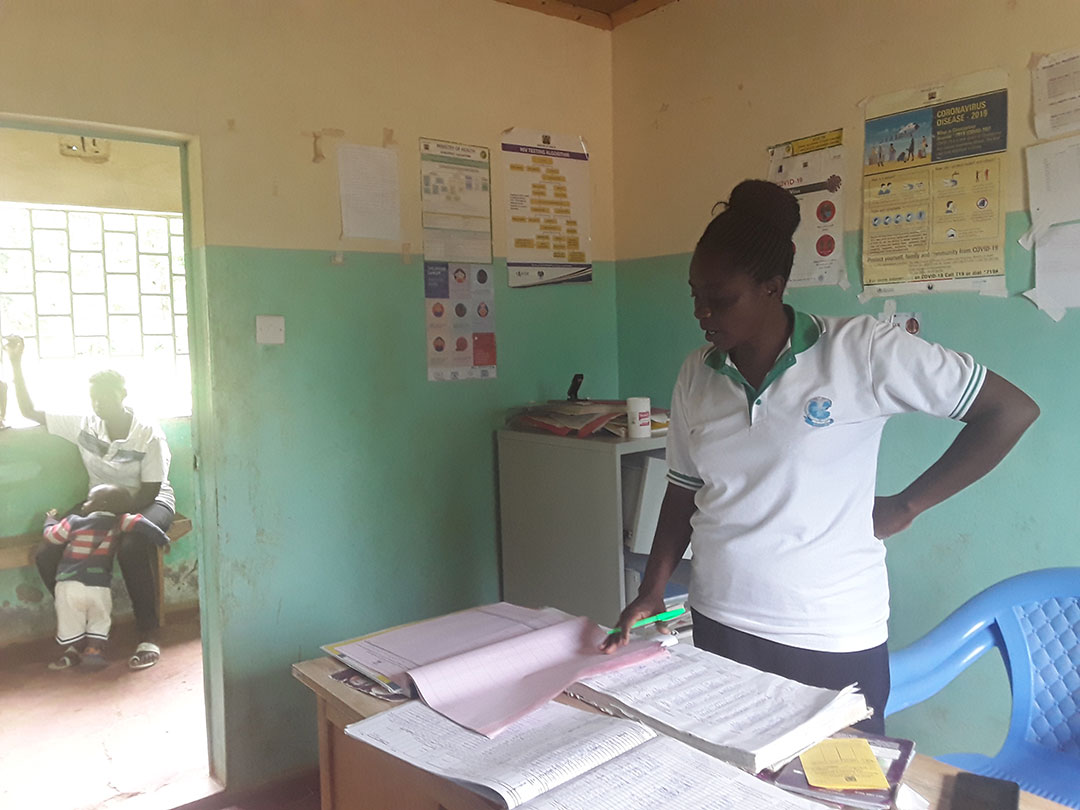
Credit: Joyce Chimbi
Porous borders
Still, the border zones remain vulnerable, and Muitherero recommends strengthening of the routine immunisation programme and instituting heightened surveillance, especially along Kenya’s frontier.
The Kenya-Uganda borderline is approximately 870 km long from the tripoint with South Sudan in the north to the tripoint with Tanzania in the south. It’s also porous, and porous borders represent a significant challenge to disease control efforts.
When South Sudan declared a public health emergency due to an outbreak of circulating vaccine derived polio virus in December 2023, for instance, the threat resounded across the border. Kenya and South Sudan share a straight-line border that extends for over 200 km. Locals in Malaba town indicated that South Sudanese citizens can easily enter Kenya through Turkana County, but due to violent conflict between the Turkana in Kenya and the Toposa, a South Sudanese ethnic group, people instead often enter Kenya or Uganda through Bungoma, Joyce Nakhumicha’s home county. Locals were alarmed: many were aware that in February 2009, wild poliovirus had been imported into Kenya from South Sudan, resulting in 19 cases in Turkana County.
In 2024, a polio outbreak in Eastern Africa was accelerated by significant movement of high-risk populations between countries. Uganda fortified its defences, strengthening polio surveillance activities on all ten districts bordering Kenya, covering a total of 772 km.
Abud Simiyu, nurse-in-charge of Lwakhahkha dispensary – a stone’s throw away from the Lwakhakha immigration office – explains why those intensified immunisation efforts can be necessary. “The Namisindwa-Bungoma border line that separates Kenya and Uganda has one official border point, Lwakhakha border crossing, and at least 20 unmarked crossings. People even swim across river Lwakhakha – also known as the river of death, as it’s silent but very deep – to enter or exit undetected.”
Due to this proximity, he says the dispensary caters to a large number of Ugandan women, “who come for family planning, labour and delivery services. But once vaccinated at birth, we often do not see the child again. The phone numbers mothers leave behind do not often work or they will say they moved further away. Most of them live at least 30 km inside Uganda. We have no mandate in Uganda, so they remain in our registers as vaccine defaulters.”
“I live in Bugembe and my three children were born in Kenya as they have very good maternity services. Many women from the eastern region in Amuria, Budaka and Tororo often cross into Kenya for these services. Once the baby is born healthy, we move on and see no need to go back,” says Rael Nalongo, a fish trader at Tororo Market, Uganda.
Sentinel sites
It’s for these reasons that experts have designated border zones as especially in need of surveillance outposts – specifically, environmental surveillance sites.
According to Muitherero, after 2024’s polio outbreak was signalled in Uganda following the discovery of the virus in wastewater, the Africa Regional Certification Commission recommended the establishment of an environmental surveillance site in Kenya’s Bungoma and Busia Counties, which border Uganda.
Environmental surveillance for poliovirus involves testing sewage or other environmental samples to detect the presence of the virus. Positive samples function as an early warning siren, signalling the urgent need for mass immunisation campaigns to tamp down risk. Through environmental surveillance, public health experts can pinpoint the locations of likely imminent cases of polio paralysis.
Vaccines and environmental sampling aren’t the only tool Kenya is deploying against the still-lurking threat. Touray says Kenya – which he describes being on the “last mile to end polio” – is also making good use of other low-cost, high-impact, user-friendly innovative tools on its journey. These tools include the Geographic Information System (GIS), which helps identify areas and communities with poor immunisation coverage, establish outbreak locations, track population movements and is highly effective along the border points.
GIS is a visual map, but it is more than just a map. A GIS is a computer-based system for creating, managing, analysing and visualising spatial data. The private sector and industry have long used GPS and GIS to track cargo and improve logistics: these tools are now increasingly used in public health. GIS software includes Google Earth, which offers powerful visuals of areas affected by, or at risk of, polio.
Muitherero says Open Data Kit (ODK) allows for data collection on mobile devices and can be used in conjunction with dashboards or visual tools for real-time monitoring of the data. “If there is a case in Kenya today and Uganda is similarly reporting cases on their side, we use technology to trace its [virus] path back to origin for an effective response,” he says.
Lucy Wamala, a nurse based in Tororo, eastern region of Uganda, says a case of polio in 2024 detected in Mbale City, Uganda was traced back to Garissa County in Kenya, having entered Kenya over the Kenya-Somalia border. In response, Uganda’s Ministry of Health quickly laid on a vaccination campaign that targeted 2.7 million children in the eastern part of the country, abutting Kenya.
“We use a wide range of traditional and innovative tools that help us track and, in many cases, even predict what poliovirus is doing and will be doing. More traditional methods include having strong micro plans that tell us how many children we need to reach, how many vaccinators to recruit, how much vaccine to order and so on,” Touray says.
Alowo Sophie, a nurse at Malaba Health Centre in Uganda, says the Ministry of Health relies on this data to roll out robust “mass vaccination campaigns. For instance, the Kenya-Uganda synchronised cross-border polio vaccination campaign on October 3–6, 2024, reached more than 6.5 million children. The campaign began in Bungoma in Kenya and Mbale district, Uganda.”
There’s an app for that
Touray says more innovative measures include “genetic analyses of isolated polioviruses that tell us how it is behaving, and GIS that provides additional crucial information on where high-risk populations may be and what our focus should be. The better information we have, and systems analysis methods, the more effectively we will be able to operate, and GIS is just the latest innovation that helps us in strengthening our strategic approaches.”
Beyond surveillance, polio detection and response, technology is helping address other challenges such as timely delivery of payments to polio frontline workers. Mobile money or mobile cash transfers are fast and efficient ways to disburse funds to frontline workers and are widely used in Kenya, and increasingly, in Uganda, to pay polio vaccination workers for their lifesaving efforts.
Mobile money allows for direct payment to the worker’s mobile wallet, helping address operational problems, as cash payments can come with the risk of fraud, diversion of funds, delays in paying field workers, security risks and the need for physical transportation. Instant payment via mobile money is a morale-booster, too, and that’s important. This last mile is proving to be a long one, and Kenya’s continued safety from the paralysing virus relies finally, decisively, on the perseverance and dedication of frontline health workers.
This story was developed with support from the United Nations Foundation.
